Francis Bacon (Dublin, 1909 - Madrid, 1992), one of the greatest Irish painters of the second half of the twentieth century, is a striking example of an artist whose personal story is closely linked to his work, in that he used painting as a means of expressing his anxieties. Despite an outgoing temperament devoted to amusements and friendships, Bacon harbored dark and conflicting feelings within himself because of the difficulties he experienced in his childhood and adolescence. His paintings are, in fact, characterized by deliberately disturbing and disturbing images, in which the human figure is distorted or depicted as anthropomorphic, often in the act of screaming, and is placed in bare, lonely rooms.
In the last years of his life, despite many painful bereavements, Bacon became aware of the need to live more lightly and introduced softer hues into his works, which he continued to make until late in life. He had a visceral relationship with art, leading him to destroy his own works when deemed unworthy or to prevent him from seeing live works by other painters whom he deeply loved. Such as Diego Velázquez’s Portrait of Pope Innocent X , the painting on which he did a reworking that is one of the works for which he is still best known and which he did not want to admire until he was elderly.
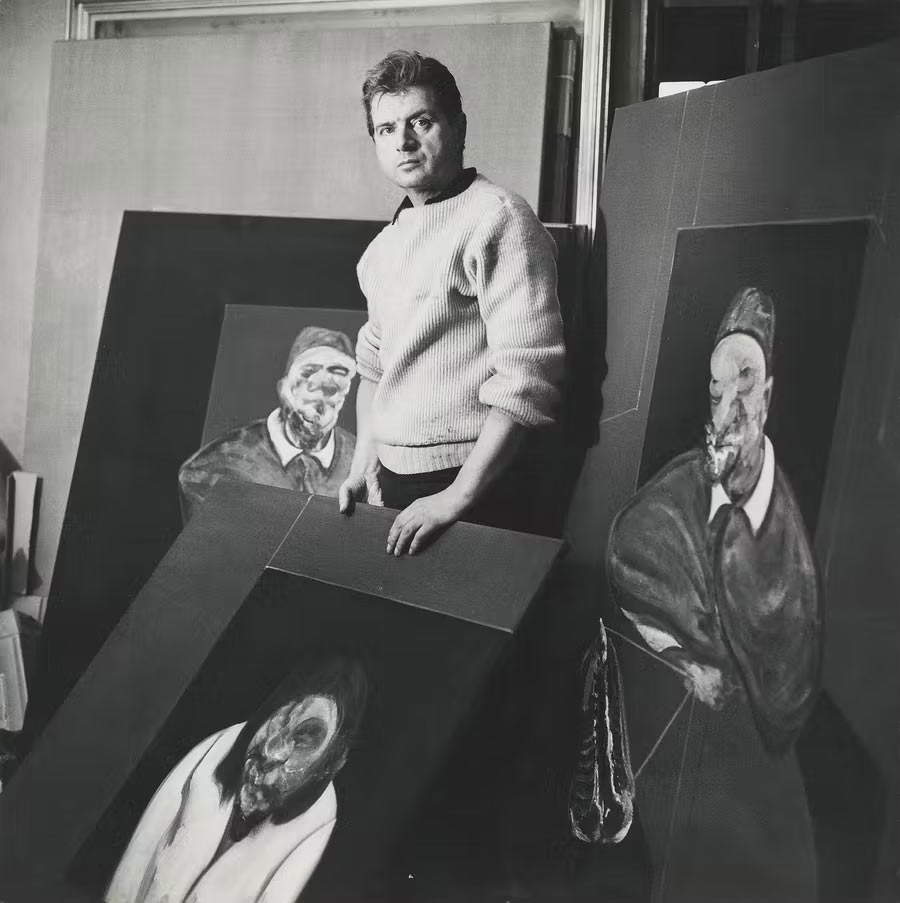
Francis Bacon was born in Dublin on October 28, 1909. Bacon’s childhood and youth with his family were not very easy. Both his father Anthony Edward Mortimer Bacon and his mother Christina Winifred Loxley Firth came from fairly wealthy families; his father was probably also related to the seventeenth-century philosopher Francis Bacon (or Francesco Bacone, as he is known in Italy). However, the father, a war veteran, had a rather irascible temper and came into conflict with his son several times. As a young boy, Bacon suffered from chronic asthma (inherited from his maternal grandfather) and often had to stay at rest, so his social and school activities were limited, and in the eyes of his father, who led a very active lifestyle, this limitation made him appear weak.
After the outbreak of World War I Bacon and the family moved from Dublin to London, and the young artist began attending classes at Dean Close School in Cheltenham. These were the years in which he became aware of both wanting to be an artist and being homosexual. Both convictions became as many points of contention with his father, who, exasperated by constant quarrels, finally ordered his son to leave their home in 1926. Bacon then turned to some of his mother’s relatives in order to make a living, and he began working at various jobs. A large city like London offered him several opportunities to come into contact with very open and varied artistic and cultural circles, yet in Britain a law was in force that prosecuted homosexuality as a crime, and Bacon lived this condition in an eternal balance between the ’marginalization he suffered every day and the pride, which he often displayed with ease.
The following year, in 1927, he moved to Paris and stayed there for a year and a half. He took to various museums and was struck by Nicolas Poussin’s painting Massacre of the Innocents , in particular the suffering expressions of the figures depicted remained etched in his mind. He then became even more fascinated by an exhibition devoted to Pablo Picasso at the Paul Rosenberg Gallery, which he returned to visit very often, trying his hand at Cubist-inspired drawings and watercolors each time and finally maturing the idea of becoming a painter.
Once back in London in 1928, he began working as an interior designer and through his work was able to expand his network of contacts, meeting, among others, Douglas Cooper, one of Britain’s most renowned collectors of modern art, and Eric Hall, later his lover and protector. He decided to hold his first solo exhibition in late 1929, in which he exhibited paintings and works made of rags and various kinds of furniture, managing to sell some of the paintings and obtain some commissions. Then, in August 1930, a two-page article entitled The 1930 Look in British Decoration was published in The Studio magazine in which some photographs of his work were shown, including a round mirror, rags, and tubular steel and glass furniture.He spent some time in Germany and returned to London again and settled with Eric Hall in what had once been John Everett Millais’s studio house, located near the Victoria and Albert Museum. In this museum, Bacon admired the works of John Constable and the photographs of Eadweard Muybridge.
As the years went by, Bacon assimilated all the innovations he had seen in Paris and Berlin, and in addition to Cubism he also began to move into Surrealism. In 1936, he sent some paintings to the International Exhibition of Surrealism, however, these were rejected as being defined as too little in keeping with the current. This episode caused great disappointment in Bacon, who stopped painting for a time and in 1944 went so far as to destroy all his earlier works, saving only one, the famous Crucifixion. It was not until a year later, in 1945, that a new appearance by Bacon at the Lefevre Gallery in London with the triptych Three Studies for Figures at the Base of Crucifixion changed the fortunes of the artist’s success, and he began to be in demand by major galleries and museums. He established an ongoing collaboration with the Hanover Gallery in London, where he mounted numerous solo exhibitions.
Consecration also came internationally, representing England at the Venice Biennale and participating with his works in several exhibitions in Europe and the United States. Bacon’s whimsical temperament, at any rate, placed him in debt to the Hanover Gallery, producing few works and spending far above his means to maintain his lifelong standard of living devoted to amusements (gambling and alcohol, in particular), which he shared with numerous friends. Fortunately, in 1958 a new opportunity materialized for the artist with the Marlborough Fine Arts gallery, which offered to settle his debts to Hanover and draw up a new contract with the artist. Marlborough organized many successful exhibitions, leaving the painter quite free to express himself. The first catalog raisonné of the Irish author’s works was compiled in 1964, and it included about two hundred works made since 1944, thus averaging less than one painting per month. Two personal episodes deeply affected Bacon as an artist, namely the sudden deaths of his friend Peter Lacy in 1962 and then that of his lover George Dyer in 1971. Both nefarious events occurred in correspondence with international successes in his career, and Bacon reacted by intervening in certain modes of his painting, for example by using more muted colors. He continued to work uninterruptedly until the last. He died on April 28, 1992, at the age of eighty-two, in Madrid, where he had gone on a trip, from pneumonia aggravated by his chronic asthma.
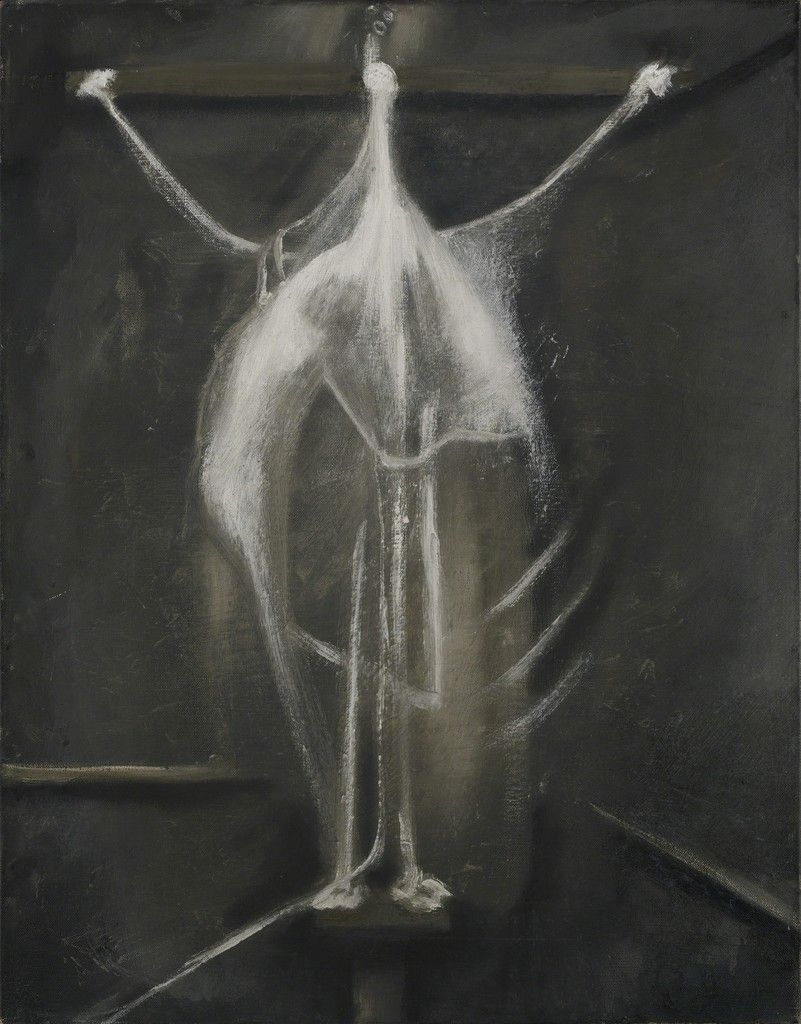


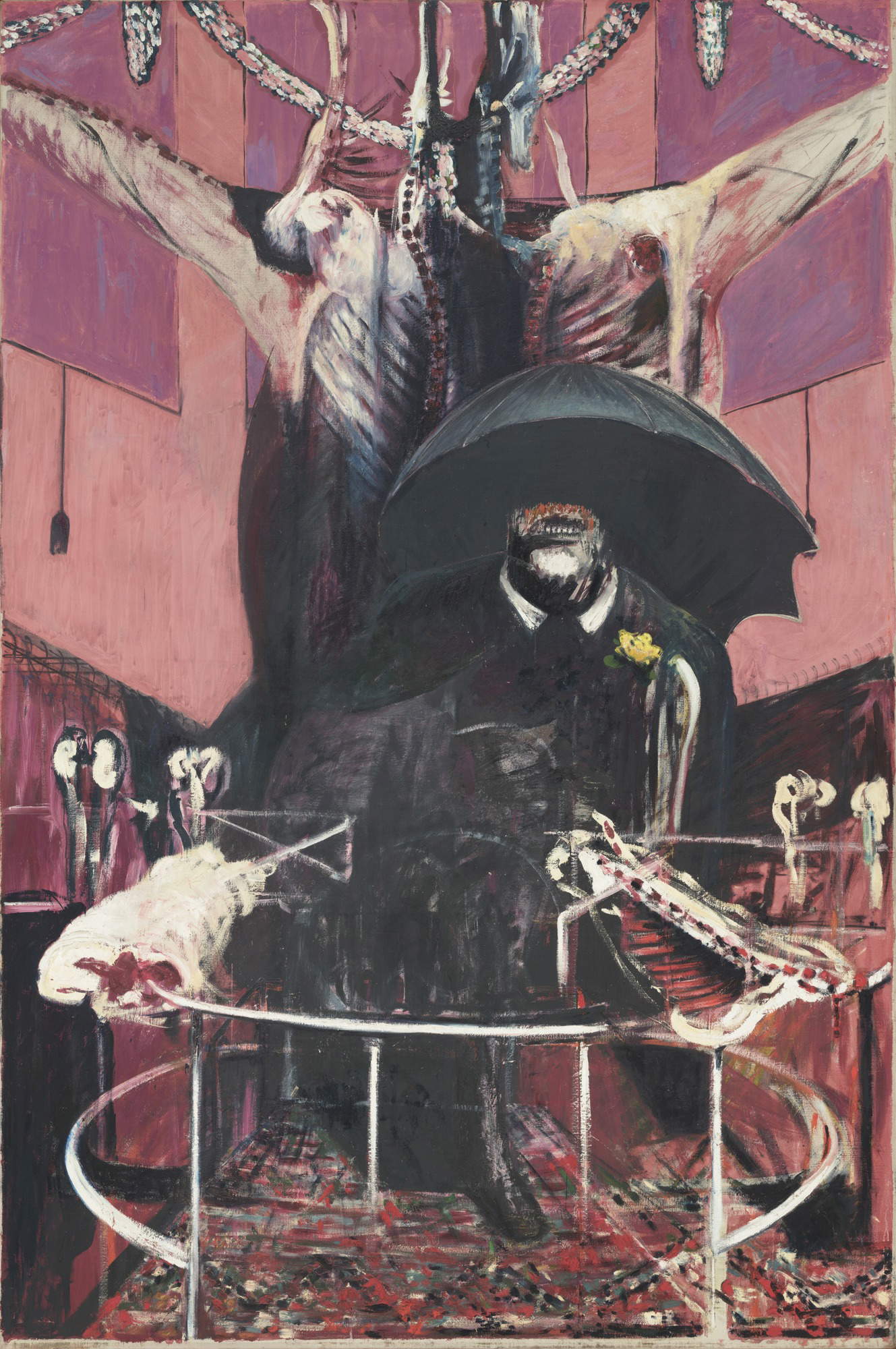
Bacon was an artist who wasextremely attentive to the quality of his works, even maniacally so. He severely analyzed the results produced and went so far as to destroy his works when they were rejected, or when he felt they were not up to par. This temperament demonstrated a visceral relationship that had been created between the artist and the artistic medium, which for him was a way of expressing the ’existentialism that he harbored within him because of the not easy life he lived and that in everyday life he hid behind his exuberant character and a very extroverted way of life. He painted by often repurposing certain details and solutions, as he declared that he “saw images in a series,” whereby realizing one, he would immediately visualize another related to it. Recurring details of his painting originate from this conviction, such as the human figure, presented with deformed features in the act of desperately screaming and for this reason equally distant from figurativism and cubism; the empty rooms in which the characters are placed; the predilection for somber colors; the diptych or triptych format; and the series of the same subjects repeated over a long period of time.
The works dating from before the 1940s, as already anticipated, were destroyed by the author himself, while his later production is limited in quantity but is consistently high in quality. The only work from Bacon’s early productive phase that remains to us is Crucifixion (1933), a black-and-white oil painting. The main figure is enclosed in a room, a detail recognizable by a line in the lower left-hand corner representing where the wall meets the floor, and his body is distinctly stylized. All the details of the scene are only suggested, that is, the figure is drawn with arms outstretched, symbolizing the crucifixion, yet without actually seeing the cross depicted; in addition, it would appear that the chest is open, recalling the flesh of animals hung for slaughter as it was depicted in some still lifes of the 1600s. The overall tone of the work is surreal, somber, and deliberately disturbing.
Bacon’s next work is dated to ten years later, when he resumed painting. It is a triptych entitled Three Studies for Figures at the Base of a Crucifixion (1944), in which three anthropomorphic figures are painted against bright orange colored backgrounds. The figures are very reminiscent of the Furies, or Erinyes, characters from Aeschylus’ Greek tragedy Oresteia. These were the personifications of vengeance, in the form of three winged sisters always depicted in the act of screaming terribly, carrying flashlights or burning embers to strike their victims and with snakes for hair. Each of the canvases that make up the triptych features an anthropomorphic figure: on the left is portrayed seated on a chair, with clothes, shoulders and head resembling a woman, while everything else is more like a bird of prey; the figure in the center, on the other hand, is actually a long-necked bird leaning on a stool, reaching down with its beak open; while the last figure is presented in a decidedly unnatural backward pose, while screaming. In Greek tragedy, the Furies are directly connected to the events of Agamemnon and Clytemnestra, but Bacon does not intend to depict particular episodes in the narrative. At the same time, the real meaning of the work has not been revealed. It could either be a reworking of Christ and the Three Thieves, as well as being three figures that were to be at the base of a crucifix, as the title itself would suggest. The triptych was triumphantly received and contributed to Bacon’s reputation as one of the most important contemporary artists of the time. Bacon himself recognized it as one of his most mature works.
The theme of the crucifixion recurs frequently in Bacon, in fact in 1962 on the occasion of a retrospective exhibition on him organized by the Tate Gallery in London he made another triptych with a similar title, Three Studies for a Crucifixion, but with different, more human figures. He then reworks the work in 1988 in a second version twice as large, and with a background that turns red, similar to the color of blood. Soon after, Bacon painted Painting (1946), a work in which references to past works become evident. One can detect some elements taken from Nicolas Poussin’s The Adoration of the Golden Calf , which Bacon must have seen in an exhibition the previous year. Two elements in particular are in common, namely the calf, which in Bacon’s work appears slaughtered instead of alive, and the umbrella, which seems reminiscent of the circular tent-like structure found in Poussin’s work.
The first series of works entitled Head I (1948) is dated to the late 1940s. In this, which is the first of six paintings, there is a decomposed head, forming a shapeless agglomerate in which only a few details are recognizable, such as the jaw, the open mouth decomposed into a cry, teeth and an ear. The head is lying on a bed of which only the headboard is recognizable, inside a room represented as usual by two crossed lines at the top to represent the corner formed by two walls. For the first time the golden color appears, which would later be characteristic of the works of the 1950s. The six Heads were all made in one year, in preparation for a planned exhibition in 1949 at the Hanover Gallery in London.
Another very famous series that is still among the painter’s most celebrated productions is the one devoted topopes. There was no intent of judgment against the papacy or the Catholic Church in his choice of theme; rather, Bacon felt boundless admiration for Diego Velázquez’s painting Portrait of Pope Innocent X and tried his hand at his own reworking of it, going so far as to make 25 versions of it between 1949 and 1956. The artist considered this work such an unattainable masterpiece that he could not even get into the Doria Pamphilj Gallery in Rome to see it live during a stay in the capital. He succeeded only late in life, on the occasion of an exhibition devoted to Velázquez in Madrid. He particularly admired its realism and psychological rendering. The first work on this theme was dated to 1950, but it remained hidden until 1990. Bacon had begun working on it in preparation for an exhibition, also at the Hanover Gallery, but was not satisfied with the results. The immediately following version is dated 1953, Study after Velázquez’s Portrait of Pope Innocent X. The scene has the characteristics of a nightmare, in which the image that inspired it, namely the pope seated on a chair and dressed in purple, is distorted and the protagonist, from being calm and reflective as he was, screams in a disheveled manner while golden lines synonymous with prison bars tower above him and seem to stifle his cries. This is, moreover, the first work in which a change occurs in Bacon’s color pal ette, which becomes increasingly somber.
In works dated to the 1960s, a love interest of Bacon’s appears explicitly. In general, in this period the artist makes several portraits of friends and people in his circle of acquaintances, and one of these is precisely his companion George Dyer. The most notable work depicting him is Portrait of George Dyer Talking (1966), in which the man is portrayed in a room with purple walls and a red floor, sitting on a swivel chair in front of a door, or window, that frames his head. Below the chair are depicted several sheets of paper thrown on the floor, and above it is a bare light bulb, without a chandelier, to accentuate the sense of unease and loneliness. The portrait comes very close to cubism, especially in the face of the protagonist, who seems to be caught in the act of turning around representing different moments. Dyer would later be the protagonist of two triptychs that Bacon dedicated to him after his death, Triptych-August 1972 and Triptych, May-June 1973 , which together with some portraits of his beloved’s face constitute the series of the so-called Black Triptychs, the Black Triptychs, because of the very dark backgrounds that unite the series.
In the mid-1980s Bacon painted another triptych, in which this time the protagonist is himself. Study for a Self-Portrait-Triptych (1985-1986) is one of Bacon’s last works, which states that he decided to make a self-portraitas he was left without other subjects, having passed away many friends and loved ones. The triptych incorporates many characteristic elements of Bacon’s painting, such as the deformed figure in the center of a bare room, but the colors become much softer and lighter. This detail is coupled with Bacon’s profound reasoning about the passage of time and old age, which he makes at a time when he recognizes the need to live a simpler life than in youth.
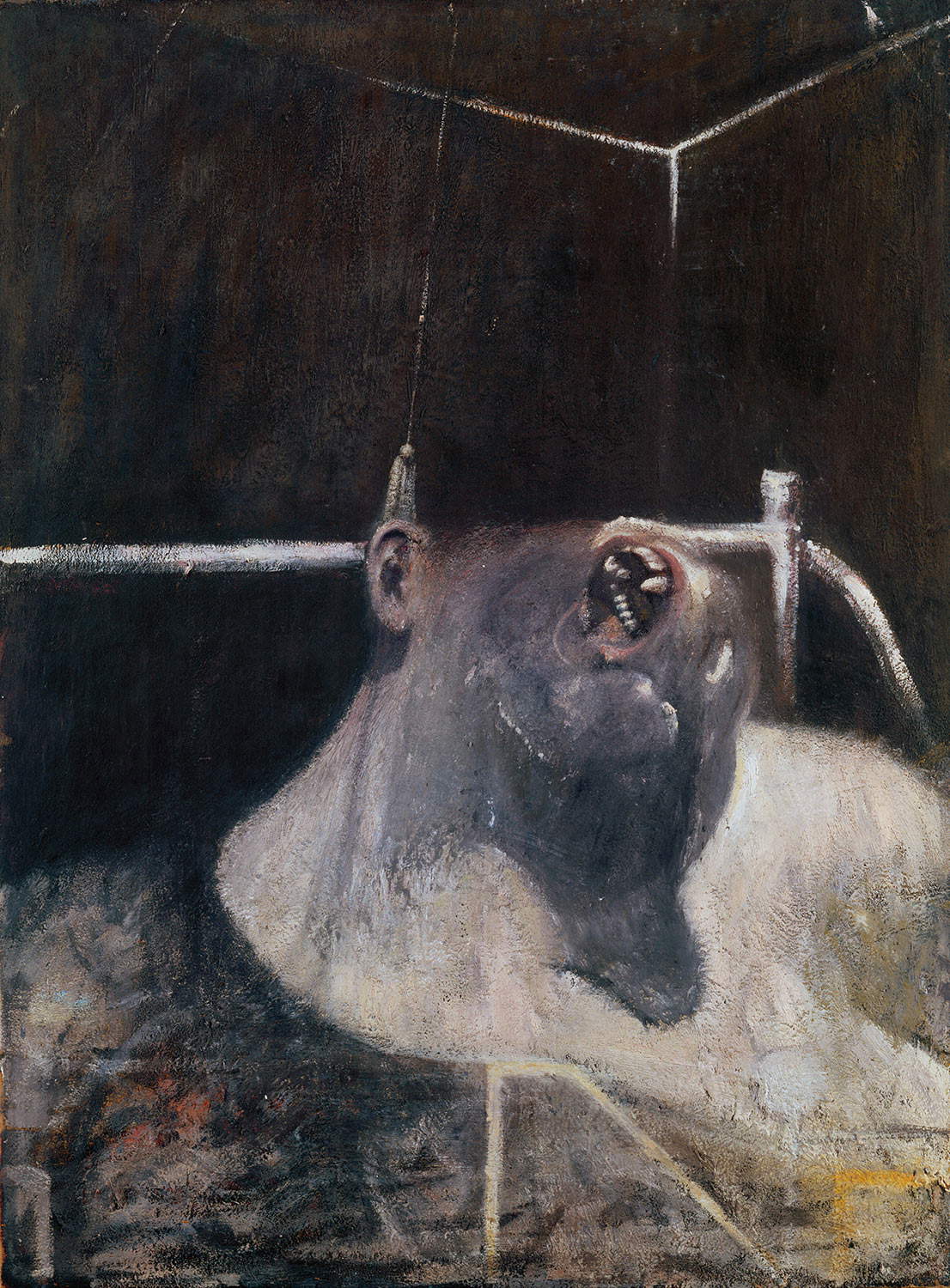
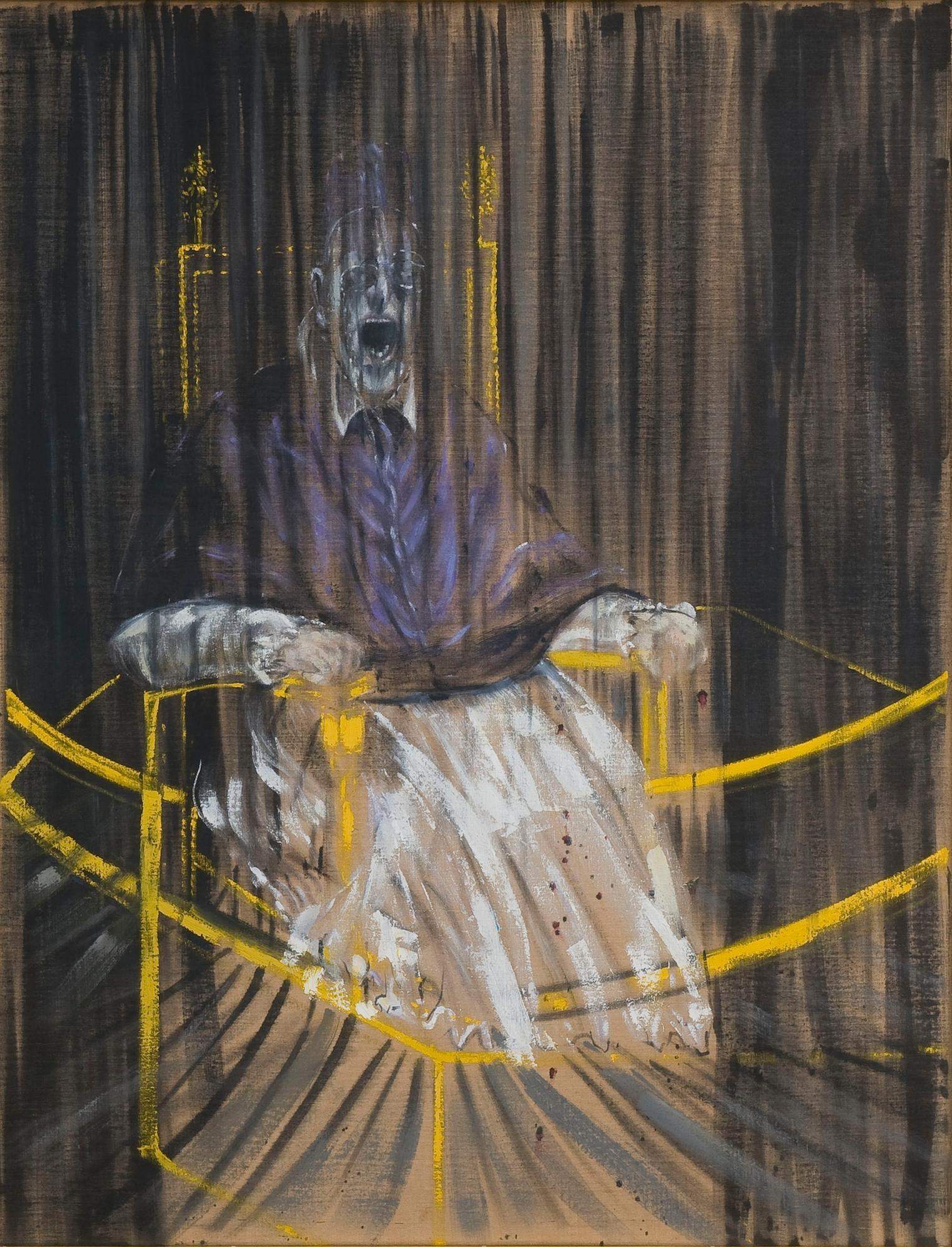
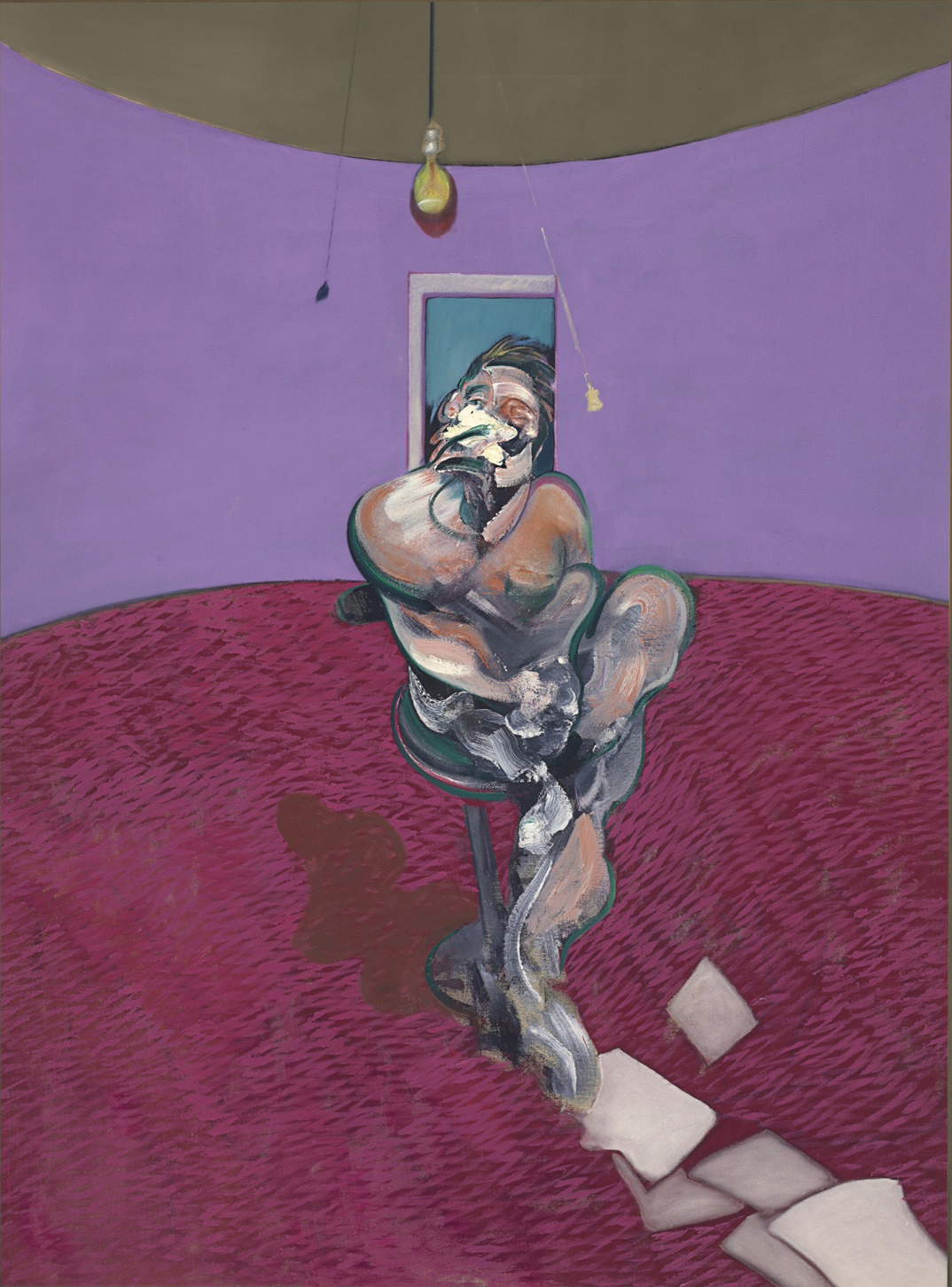

Bacon’s works are held in several international museums, most of which are in London and the United States. One importnte painting is also in Northern Ireland: it is Head II (1948), the second work in the Heads series, housed in the Ulster Museum in Belfast.
In London it is possible to visit in the Tate Gallery Three Studies for Figures at the Base of a Crucifixion (1944), Figure in a Landscape (1945), Triptych-August (1972), Second Version of Triptych 1944 (1988) and many others. Also in the Marlborough Fine Art gallery is Study for a Self-Portrait-Triptych (1985-86). Also in the Centre Pompidou in Paris is a work by Bacon, namely Three Figures in a Room (1964).
In the United States, Bacon’s works are preserved in MoMA - Museum of Modern Art in New York, specifically Painting (1946), Head I (1948), Three Studies for the Portrait of Henrietta Moraes (1963), Triptych 1991 and many others. The famous Study after Velázquez’s Portrait of Pope Innocent X (1953), on the other hand, is preserved in the Des Moines Art Center, Des Moines, Iowa State.
Several works are in private collections, as they have been the subject of numerous auction sales, and are often loaned for exhibitions devoted to the artist. Among the most famous are Crucifixion (1933), which is part of the Murderme Collection of artist and collector Damien Hirst. The collection in question was the subject of an exhibition held in Italy at the Pinacoteca Giovanni e Marella Agnelli in Turin in 2013, an opportunity therefore to see many of Bacon’s works in our country.
In Italy, however, there are two paintings by Bacon, Man Eating a Leg of Chicken (1952) in the Maramotti Collection in Reggio Emilia and Study for Chimpanzee (1958) in the Peggy Guggenheim Collection in Venice.
 |
| Francis Bacon, life, style and works of the troubled painter |
Warning: the translation into English of the original Italian article was created using automatic tools. We undertake to review all articles, but we do not guarantee the total absence of inaccuracies in the translation due to the program. You can find the original by clicking on the ITA button. If you find any mistake,please contact us.